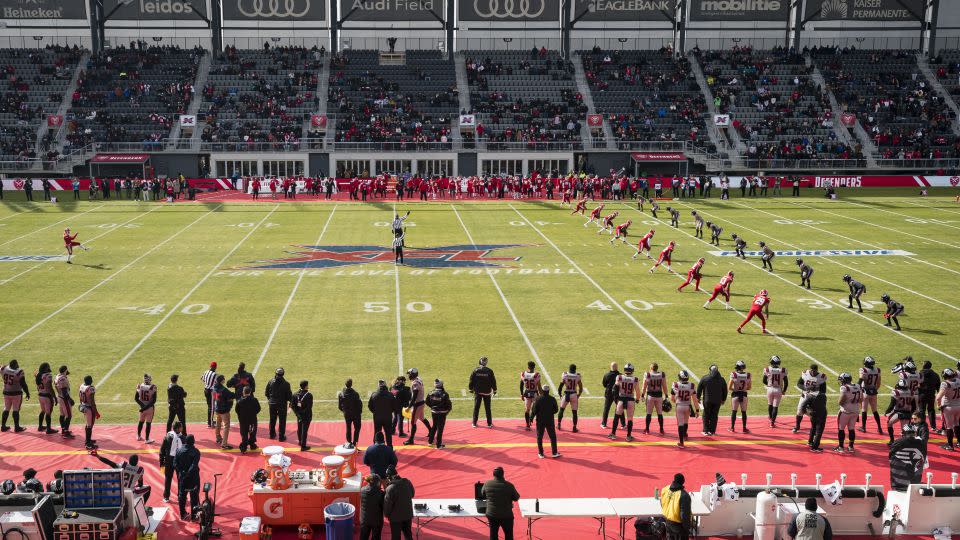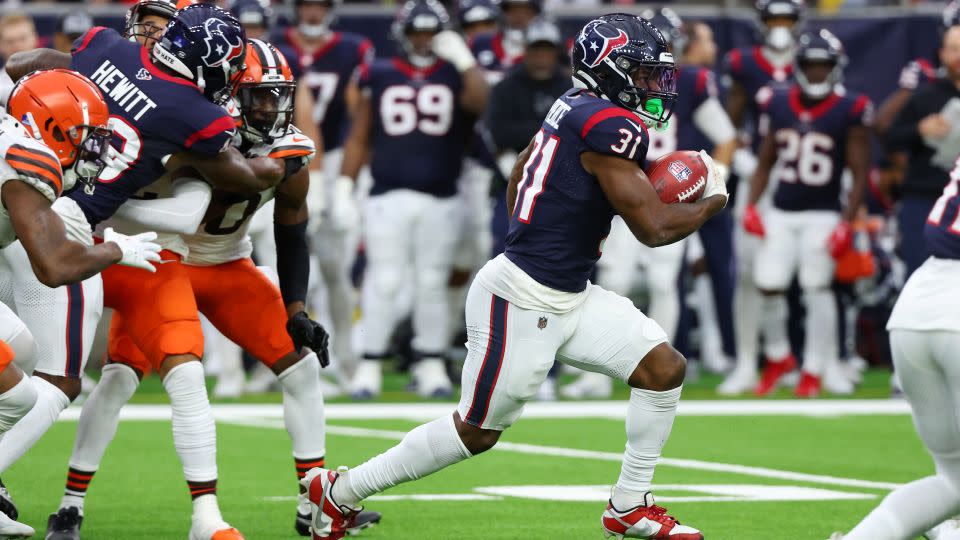The way NFL games start is drastically changing after team owners approve new kickoff rule
NFL kickoffs are set to look dramatically different next season.
At the NFL’s Annual League Meeting on Tuesday, team owners officially voted to approve a new kickoff format, adopting a system that was first seen in the XFL.
The vote passed 29-3, per the NFL.
This comes after owners shook up the rule book by voting to outlaw the controversial ‘hip-drop’ tackle on Monday.
Under the current rules, teams were given the option to return kickoffs – which take place at the start of each half and after every touchdown and successful field goal – and attempt to advance the ball up the field, if not score a touchdown, to give the offense the best starting position possible for their drive.
In 2018, the NFL introduced a rule that saw any kick that landed in the end zone become an automatic touchback, resulting in the ball being spotted at the 25-yard line. Then in 2023, the NFL announced that the returning team would be able to signal for a fair catch to advance to the 25.
These alterations – combined with the significant injury risk that the kicking team posed by running at full speed towards the returning team – saw the incentive to return the ball dwindle.
The alternate kickoff rule was proposed by the league’s Competition Committee to “address the lowest kickoff return rate in NFL history during the 2023 season and concern for player health and safety.”
It is a radical change to the format that NFL fans are familiar with and comes with a handful of quirks that will take a lot of getting used to.
What is the new rule?
Per the NFL, the new format will still see the ball kicked from the kicking team’s 35-yard line, but every player on the kicking team other than the kicker themself will now line up with at least one foot on the returning team’s 40-yard line. At least nine members of the returning team will line up in a “setup zone” beginning five yards opposite on its own 35-yard line (a minimum of seven players must have a foot on what is known as the “restraining line”) stretching to its own 30-yard line, with up to two returners in the “landing zone” (defined as the zone between the goal line and the 20-yard line).
No players other than the kicker and the returners can move until the ball is fielded by a returner.

Any kick that is caught or lands in the landing zone must be returned, while any kick that falls short of the landing zone will be ruled a touchback and spotted at the returning team’s 40-yard line.
If a kick hits the landing zone and then goes into the end zone, it has to be returned or downed by the receiving team. If it’s downed, it will be ruled a touchback and go to the 20-yard line.
If the ball hits the end zone and stays inbounds, it has to be returned or downed – if it’s downed, it is a touchback and moved to the 30-yard line. Similarly, if the ball goes through and out of the end zone, it will be a touchback to the 30-yard line.
This is quite different, right?
This is already a lot to take in for longtime NFL fans – and likely the players and coaches themselves – but the changes don’t even stop there.
Among other nuances, the kicker will not be allowed to cross the 50-yard line until the ball is fielded, penalties from scoring plays will not carry over and fair catches from kickoffs will be eliminated. Punt returns will not be affected by these changes.
“I think it will be a big improvement,” NFL commissioner Roger Goodell said, according to the league. “I think that it will bring the (kick return) back into a relevant play, an important play and an exciting play. I think we can do it where the injury rate hopefully will drop.”
Goodell noted that issues with the new format, which is currently approved for next season only, may have to be ironed out in the future.
“I think that we’re still going to have to tinker with it,” he said on Tuesday. “I think it’s one of those things, when you get it in play, you look at things and we’ll re-evaluate that as the season’s going on. And if it’s appropriate to make changes in the future, we will.”

Detroit Lions head coach Dan Campbell spoke in favor of the changes before the vote was passed on Tuesday.
“Absolutely in favor of it,” he said. “It gives us a chance to play special teams. What happened last year took a significant amount of plays out of the game and those were from special teams, and you don’t make it up anywhere else.”
While the new system is intended to make kickoff returns more exciting, it has turned one of football’s most dramatic plays into an unfortunate casualty: surprise onside kicks will no longer take place as they will not reach the landing zone.
Teams can still utilize onside kicks, but they will have to be declared to officials and can only be used by a trailing team in the fourth quarter, up to twice per game.
While this all seems like a lot to take in, don’t worry, you aren’t alone and the only certain thing is that the opening weeks of the new NFL season will definitely be must-see TV.
For more CNN news and newsletters create an account at CNN.com
